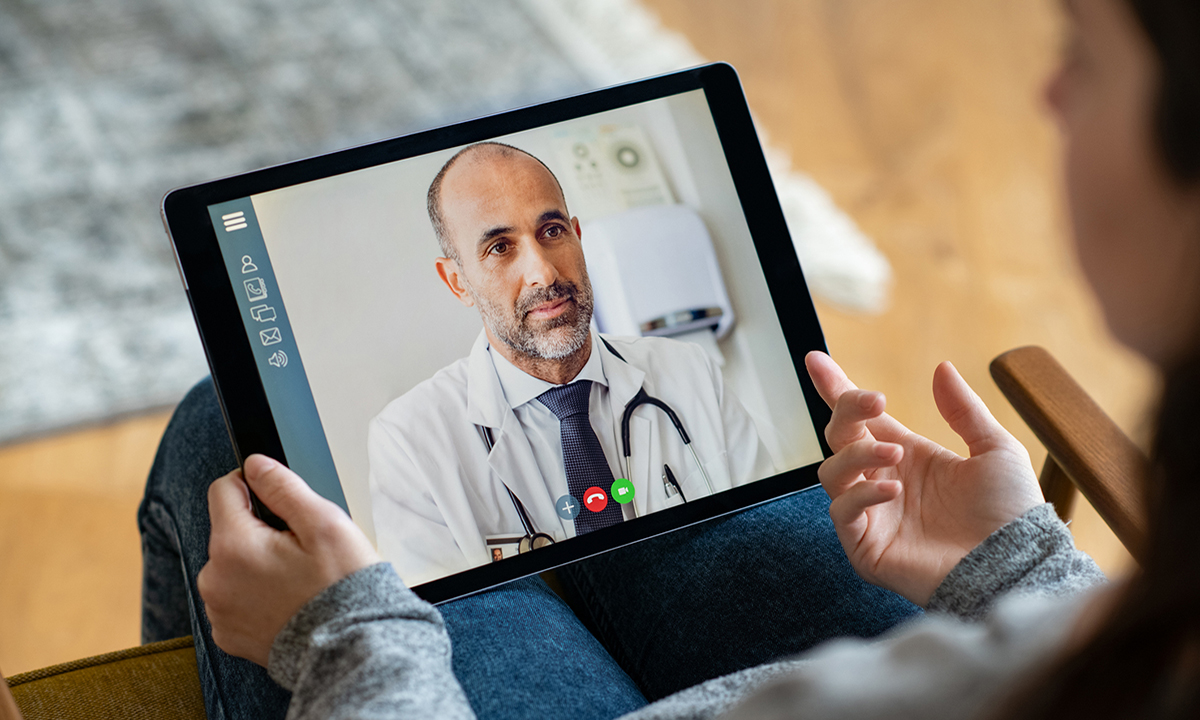
Telemedicine has become a necessity during the COVID-19 pandemic, and hospital laboratories need to be prepared to modify their operations to accommodate this new mode of delivering healthcare, according to ARUP Laboratories lab management experts.
“The delivery of healthcare has radically changed, and the lab industry woke up one day to find it was Blockbuster in a Netflix world,” said Andrew Fletcher, MD, who is the medical director of Consultative Services and the Family Health Clinic lab at ARUP. “The lab industry has to figure out how to evolve and adapt, and those labs that don’t are likely to follow the fate of Blockbuster.”
Fletcher and Sandy Richman, ARUP’s director of Consultative Services, described the trend during a recent Dark Report COVID-19 STAT Intelligence Briefing call.
“The use of telemedicine was growing prior to the pandemic, but COVID-19 led to a significant increase,” Richman said. “After the pandemic, I expect telehealth visits will stabilize at a much higher rate than prepandemic levels. Now that patients and providers are more comfortable with this new care delivery model, they will use it out of convenience, rather than necessity.”
The use of telehealth for clinical care spiked in March and April when the majority of the United States went on lockdown, and while its use has since tapered off, a steady 18% of healthcare continues to be delivered over telemedicine, and this is predicted to increase to 20-30% going forward. The pandemic resulted in the removal of a number of barriers to telehealth delivery that might normally take years to remove.Andrew Fletcher, MD, CPE, MBA“Any lab leader should be active in the telemedicine conversations to be relevant and participate in finding solutions.”
First, Medicare initiated a telehealth waiver to expand compensations, allowing for a greater variety of virtual visits. Before the waiver, Medicare could only cover telehealth on a limited basis, according to the Centers for Medicare & Medicaid Services (CMS). The waiver extended permission for use of telehealth services to patients who live outside of designated rural areas, and allows physicians to practice from their own homes, rather than requiring them to deliver care from a hospital or clinic.
Next, the Health Insurance Portability and Accountability Act (HIPAA) had to be modified to allow the use of videoconferencing services such as Zoom and WebEx. This allowed practitioners to quickly begin offering telehealth without needing to implement one of the few telehealth options previously available under HIPAA standards.
And finally, reimbursement rates for telehealth visits were increased to match those for in-person visits. This further encouraged hospitals to implement telehealth protocols because many health systems were experiencing a drop in revenue due to the COVID-19 pandemic.
According to Global Market Insights, the telehealth market is projected to reach $175 billion in annual revenue in five years, and hospital laboratories need to be prepared to adapt to provide accessible lab options as convenience becomes a priority to patients.
ARUP recently surveyed 63 clients to learn how they’re embracing the switch to telemedicine. “I was surprised by the number of respondents that didn’t know the level of virtual care being provided by their healthcare system or an estimate of its impact on laboratory outreach revenue,” Fletcher said. “Any lab leader should be active in the telemedicine conversations to be relevant and participate in finding solutions.”
ARUP will share survey results in a webinar and use the information to improve Consultative Services programs. More information on how to access this webinar (titled Laboratory Evolution and Adaptation to Telemedicine: Are We Blockbuster in a Netflix World?) will be available soon on arup.utah.edu/education/videoIndex.
“We have a number of programs and services available to assist our clients with outreach growth and development, and we’ll modify our offerings to include components specific to servicing patients receiving virtual care,” Richman said. “Using competitive analysis information, we can work with our clients to develop a patient access strategy, including placement of convenient patient service centers. Combining the expenses associated with servicing this market with the anticipated revenue opportunity, we can develop a financial pro forma our clients can use to make sound business decisions.”
More information about all of ARUP’s Consultative Services offerings is available at aruplab.com/consulting.
















